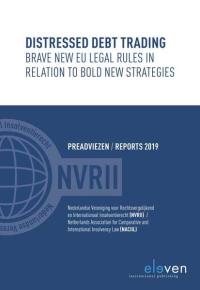Distressed Debt Trading
Brave New EU Legal Rules in Relation to Bold New Strategies
This book contains the four reports (preadviezen) presented at the 2019 NACIIL annual meeting on ‘Distressed debt trading: brave new EU legal rules in relation to bold new strategies’.
It is easy to be critical of distressed debt investors and the practice of acquiring debt at a discount and subsequently making a profit. On the other hand, distressed debt investors provide a relatively easy and quick way out for non-professional and professional creditors alike. Curbing the rights of distressed traders would therefor also indirectly curb the rights of original creditors. Furthermore, the European Union views distressed debt trading as a way of dealing with excessive Non-Performing Loans (NPL).
Whatever your take is on the practice of distressed debt trading, it is here to stay and is likely to influence European insolvency practice in ways similar to US and even more so as a result of COVID-19.
The Private International Law developments in this field are set out and reflected upon by dr. Lilian Welling-Steffens. She makes a strong case for easier, more predictable International Private Law rules as to the transfer of claims.
Prof. J.A. Ellias analyzes the US developments and how distressed debt trading has transformed US bankruptcy practice under Chapter 11. In his report he integrates the actual development of claims trading in numbers over the years and identifies risks and opportunities of claims trading.
Dr. S.W. van den Berg applies a comparative law perspective, comparing Dutch and American law and legal practice. He carefully builds up to his conclusion that the preparation of enforcement procedures and especially the market testing, or the M&A process upfront, has not been given the required attention.
Prof. T. Florstedt provides valuable insights on how German insolvency law and practice has tried to come to terms with claims trading.









